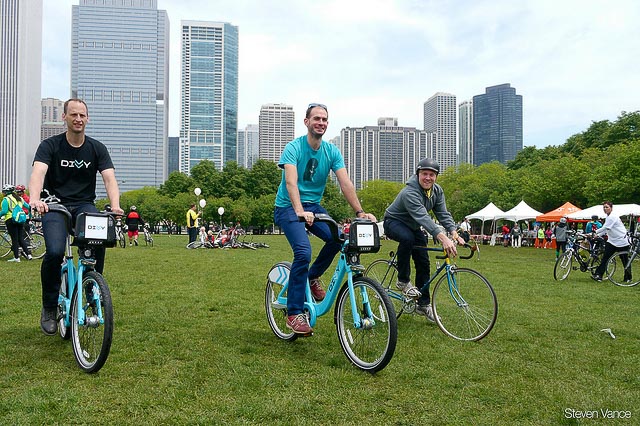It’s been a few years since bike-sharing programs were considered cutting edge. Today, the systems are widespread, and cities of all stripes and sizes are implementing and expanding them with little hesitation.
New research might give bike-sharing even more momentum by offering some evidence about how bike-sharing can help make cities -- and specifically their transit systems -- work better.
In a study published in the Journal of Transport Geography, University of California – Berkeley researchers Elliot Martin and Susan Shaheen examined how bike-sharing affects both auto usage and public transit.
Though the effects differed large and mid-size cities, in both cases, bike-share programs were a boon to transit and may have helped cut automobile use. The researchers wrote up a description of their study in Access Magazine.
The researchers surveyed bike-sharing members in four cities: Montreal, Toronto, Washington, DC and Minneapolis-Saint Paul. They received 10,661 responses.
Large numbers of residents in each of those places said they decreased their auto usage after enrolling in the service (Toronto: 25 percent; Montreal: 36 percent; Washington: 41 percent; Minneapolis-Saint Paul: 52 percent). Around 2 percent of all respondents even said they stopped owning at least one of their cars as a result of bike-sharing.
In Montreal, Toronto, and Washington, D.C. people used bike-share at the expense of not just cars, but also buses and rail transit.
Interestingly, Minneapolis-Saint Paul users showed little change in their bus usage and actually increased their rail usage. The researchers attribute the changes potentially to the size or physical nature of the cities but also note that the other three cities have extensive, well-established rail networks.
Minneapolis-Saint Paul, meanwhile, had only one light rail line at the time of the survey, suggesting bike-share might complement immature transit systems more than others.
In D.C., the researchers found bike-share users were concentrated in downtown, where there are many stations for both bike-share and transit, and where the Metro system is most congested. Users appeared to be replacing some short transit trips for bike-share.
That effect offers a direct benefit to the transit network, the researchers write, because it shifts demand away from rail when it is most congested.
In Minneapolis, meanwhile, the effect was more simple: people used bike-share to get to and from the city’s then-only light rail line.
The paper concludes that in dense, transit-rich cities, bike-share offers an alternative to short trips that would still require some walking on each end. Meanwhile, in more suburban cities with less transit, bike-share answers the “last mile” problem, taking people to and from the pesky final stretch between a transit station and their home or office.
But the research also confirmed one of the biggest criticisms of bike-sharing: that the systems are concentrated in wealthy, white enclaves.
Eighty-seven percent of the survey respondents were white, and the same share had a four-year degree, dwarfing those rates among the general population.

